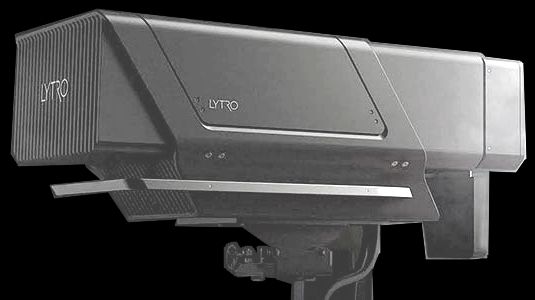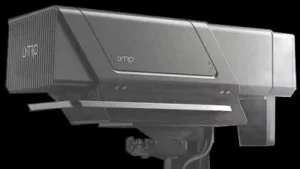Lytro, Inc. (Mountain View, CA) encountered difficulty in achieving adoption of light field technology in consumer cameras. None-the-less, the technology still has great potential for imaging in cinema and visual effects applications. To address these applications, the company developed and has just debuted a new camera product called the Lytro Cinema.
If the basics of light field technology are not familiar, the Lytro web site provides a good explanation. It can be found here.
Just as in a conventional camera, the Lytro Cinema captures the intensity and color properties of a scene. The light field camera differs from a conventional camera in that it goes on to also capture directional information relating to all of the light rays within the scene.
Given this “rich” data set, the system is capable of post process adjustment of the focus position, depth-of-field, shutter speed, dynamic range and perspective. The ability to adjust the frame rate and shutter angles in post-production allows motion blur to become an adjustable creative decision. The ability to vary the perspective means that it is possible to simulate a degree of camera movement. In addition, since a light field camera effectively samples multiple perspectives from behind the lens, it is also possible to output stereo image pairs having a wide range of viewing disparity.
In addition to these features and capabilities, the company claims that the new Lytro Cinema camera will make it easier to integrate moving CGI with live, real world footage. Green screens and chroma keying would no longer be required to swap out elements from a scene. Instead, the swapping process can be based on the use of depth field information. Use of the depth field information is enabled by the fact that the camera has an integrated high resolution active scanning system that automatically and precisely tracks the X, Y, Z, pitch, roll, and yaw of the camera. The depth field information together with the camera position and orientation information allows precise registration of the CGI to the light field data.
The bottom line is that the Lytro Cinema camera can give filmmakers the freedom to choose and visualize a wide range of creative camera decisions in post-production through the use of computational means. Such flexibility is not possible with a conventional camera system.
A video that discusses the Lytro Cinema camera can be found below this article.

Clearly there are many benefits to a light field camera. There are, however, real challenges in designing such a camera. The overarching challenge is in achieving the benefits of having the light field based image without unacceptably degrading its’ qualities when compared to an equivalent image captured with a conventional camera.
The Lytro Cinema camera addresses these problems by gathering a truly staggering amount of information from a scene. The camera sensor captures a 755 megapixel RAW image at 40K resolution, 300 FPS and up to 16 stops of dynamic range. At this rate, the camera captures data at up to 400 gigabytes per second.
With such capabilities, the company claims that the Lytro Cinema is the first system able to produce a Light Field Master by capturing and processing the entire high resolution light field. This enables multiple render options including IMAX, RealD, Dolby Vision, ACES and HFR.
Given the massive amount of data produced by the Lytro Cinema, extensive post-production processing will certainly be required. To deal with this, Lytro provides an end-to-end solution. Included are the camera, a server and a physical/cloud storage data stack in which to capture and process the raw data as well as light field software/plug-ins for existing editing options.
The company’s initially commercialization plan is to get Lytro Cinema cameras into the hands of filmmakers’ when they need it rather than selling the entire solution to studios. This suggests a rental model. Lytro has, in fact, stated that rental packages will start at $125k for the Cinema hardware/software suite. The company plans to make production packages available later this quarter. -Arthur Berman

